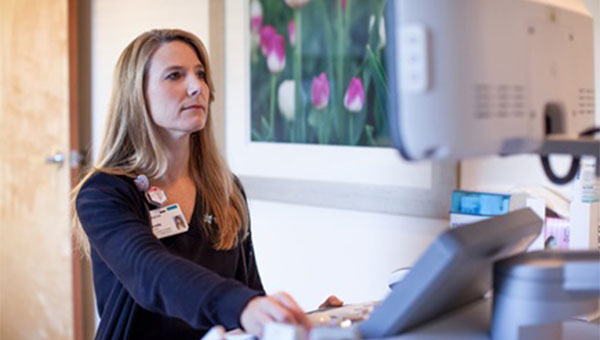Specialized Screening Mammograms
Screening mammograms play a central part in early detection of breast cancers because they can show changes in the breast up to two years before a patient or physician can feel them. This low-dose X-ray will take various digital images of your breast to detect any masses, tumors, or other areas of concern.
Research has shown that mammograms lead to early detection of breast cancers, when they are most curable and breast-conservation therapies are available. You have a 1 in 8 chance of developing breast cancer in your lifetime, and nearly 89 percent of women diagnosed do not have a family history of breast cancer. If discovered in its earliest stages, the chances of surviving breast cancer are good.
Some patients receive a 3-D Mammogram known as breast tomosynthesis, which allows radiologists to evaluate breast tissue one layer at a time. Breast tomosynthesis may be used in conjunction with traditional digital mammography as part of your screening mammogram.
What is Breast Tomosynthesis?
Breast tomosynthesis converts digital images into a stack of very thin layers or “slices,” building what is essentially a 3-D mammogram that allows radiologists to evaluate breast tissue one layer at a time.
During the tomosynthesis part of the exam, the X-ray arm sweeps in a slight arc over the breast, taking multiple breast images in just seconds. A computer then produces a 3-D image of your breast tissue in one millimeter layers. Radiologists can now see breast tissue in a more detailed way. Instead of viewing your breast tissue in a flat image, the tissue can be examined a millimeter at a time and fine details are more clearly visible.
The increased perspective allows them to detect 41 percent more invasive breast cancers and reduce false positives by up to 40 percent, significantly reducing the number of times women are “called back” or asked to return for additional imaging.
What to Expect During Your Exam
A 3-D tomosynthesis exam is very similar to a traditional mammogram. Just as with a digital mammogram, the technologist will position you, compress your breast under a paddle and take images from different angles. During the tomosynthesis portion of the exam, your breast will be under compression while the X-ray arm of the mammography machine makes a quick arc over the breast, taking a series of images from a number of angles. This takes only a few seconds and all of the images are viewed by the technologist to ensure they have captured adequate images for review by a radiologist.
The whole procedure takes approximately the same amount of time as that of a digital mammogram alone. The technologist sends your images electronically to the radiologist, who studies them and reports the results to your physician.


